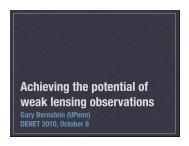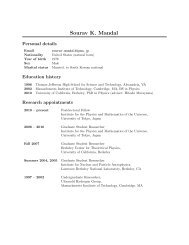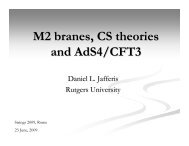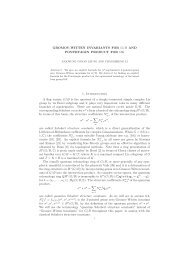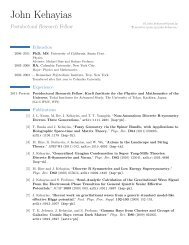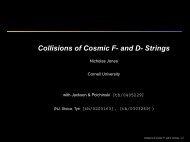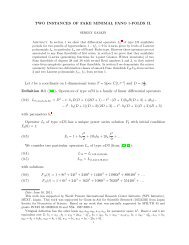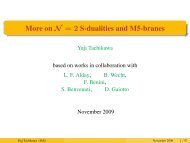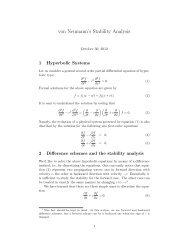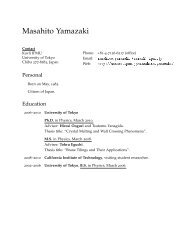STUDY SUMMARY - IPMU
STUDY SUMMARY - IPMU
STUDY SUMMARY - IPMU
You also want an ePaper? Increase the reach of your titles
YUMPU automatically turns print PDFs into web optimized ePapers that Google loves.
<strong>SUMMARY</strong> REPORT<br />
WIDE FIELD FIBER-FED OPTICAL<br />
MULTI-OBJECT SPECTROMETER (WFMOS)<br />
Changing survey modes requires the following:<br />
• Changing the camera–collimator angle. The spectral resolution R is directly related to<br />
this angle, with the lowest R corresponding to the straight-through position.<br />
• Changing the VPHG by moving the active VPHG out of the beam on to the selectorslide,<br />
moving the slide to the position for the new VPHG and then moving the new<br />
VPHG in to the beam (see Figure 3.12-3).<br />
• Changing the band-pass filter by rotating the filter wheel.<br />
This process is fully automatic and can be done in less than one minute.<br />
The WFMOS design uses VPHGs for all four surveys. VPHGs have several advantages over<br />
the ruled gratings traditionally used in astronomical spectrographs. VPHG peak efficiency is in<br />
excess of 90%. For both the DELZ and DEHZ surveys, the gratings will be used in first order.<br />
For the two Galactic Archaeology surveys, higher orders are used.<br />
The design is extremely versatile and general-purpose. The survey gratings can potentially be<br />
used at other wavelengths and resolutions by changing the camera–collimator angle. For example,<br />
the GAHR grating gives R ~30,000 at the maximum camera–collimator angle, and any<br />
wavelength sub-range (about 30-nm long) in the 420-nm–970-nm range can be selected by selecting<br />
the appropriate order with a band-pass filter. The band-pass filters are small and inexpensive.<br />
A great advantage of a VPHG spectrograph with a variable camera-collimator angle is that<br />
the gratings can always be used so that they satisfy the Bragg condition and, therefore, work at<br />
their peak efficiency. The design has additional flexibility in that it is possible to install new gratings<br />
for future observations.<br />
49



